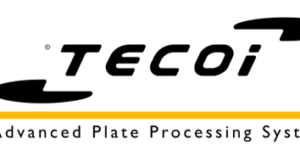WHAT YOUR SHOP NEEDS TO KNOW ABOUT PORTABLE CMMs
Ron Branch of V&M Precision Machining and Grinding explains why rapid shop floor inspection with portable CMMs is sophisticated enough to satisfy the demands of the aerospace industry, but also perfect for the small or medium machine shop.
Posted: May 8, 2011
Why rapid shop floor inspection with portable CMMs is sophisticated enough to satisfy the demands of the aerospace industry, but also perfect for the small or medium machine shop.
For the machine shop that supplies the aerospace industry, PCMM (portable coordinate measurement machine) and MBD (model based definition) are everyday terms that are integral parts of its daily inspection routines. In the effort to drive quality and control processes, aerospace OEMs have altered the inspection methodology and the tools of their entire supply chain. Many of these suppliers are small or mid-sized machine shops that have invested in inspection hardware, software and processes to satisfy strict quality standards. With the success of these supply chain efforts, Portable CMMs and the Model Based Definition Inspection technology are expected to spread to all industrial segments.
Now, it would appear that these new inspection tools and processes would place a big burden on the machine shop while benefitting only the aerospace manufacturer. It is true that this approach to quality control and inspection does demand more than what the usual assortment of hand tools and gages can deliver. It places much more emphasis on CMM-based inspections, which could mean a big investment in quality control. However, the new quality practices actually benefit the machine shop, fabricator or tool maker and it costs a lot less than they might expect.
By deploying PCMMs to the shop floor, these small businesses are realizing great gains without staffing up in the quality control department. These companies are performing thorough and accurate measurements much quicker than previously possible. They have adopted a convenient and efficient measurement process that covers everything from incoming inspection through final part inspection. And they have gained greater control over their processes.
So, how do these small shops respond to the demands of aerospace manufacturers and realize all of these advantages? They have adopted a rapid shop floor inspection approach: taking 3D measurements on the floor at the source for immediate feedback and reporting against the Engineering quality specifications. This approach is a growing trend outside of the aerospace industry and a strategy that many non-aerospace machining and fabrication shops are using today.
RAPID SHOP FLOOR INSPECTION
The Tools
There are three items needed to implement rapid shop floor inspection: hardware, software and Engineering data. To conduct inspections on the shop floor, a PCMM is needed. Although there are several options, the common PCMM choice for the small machine shop is typically an articulated arm with a positive contact probe.
Temporarily mounted on any rigid surface, these lightweight devices are easily transported anywhere in the shop. Arms have joints that let the machinist extend and rotate the measurement probe into every channel, bore or pocket. With a reach of 2 ft to 12 ft, the arms do not have physical size limits common with stationary CMMs. These features make them versatile inspection tools.
The second component of a rapid shop floor inspection system is the software that receives all of the information from the arm. In the most basic mode, the software will log and report measurements taken with the arm. However, the big gains in time and efficiency happen when the software’s full functionality is leveraged.
Portable Coordinate Measurement Machine (PCMM)
PCMMs add portability to the capabilities of the traditional, stationery coordinate measurement machine (CMM). Like the stationery devices, PCMMs capture 3D measurements that are used to inspect and qualify parts, products or objects. Using six deg of freedom probing technology, the PCMM returns X, Y, and Z coordinates of points on the surface of an object from any angle. However, to gain portability, the touch probe is mounted on the end of a lightweight, articulated arm.
Articulated arms have joints that provide six or seven rotary axes versus the three linear axes of motion commonly used on CMMs. Spanning 4 ft to 12 ft, these arms allow an operator to position the touch probe in any orientation to capture most, if not all, measurements in a single set-up. Like CMMs, PCMMs can also be outfitted with laser scanners to capture dense point clouds of measurement data.
The Freedom of Probing
Articulated arms have six deg of freedom (DOF) and positive contact probing that allows for real-time inspection without triggering points. When compared to stationary CMMs, this simple statement has a lot of impact on operators and operations.
To achieve precise measurements, the touch triggering probes on stationary CMMs require controlled speeds when coming in contact with the part surface. Slowing the approach to the feature increases inspection time. And if the approach is not along the X, Y or Z axis, some time will be added to the front end of the process for probe angle calibration. To establish accurate probe compensation and spatial orientation when adding the fourth or fifth DOF, every probe angle that will be used to measure a part must be calibrated to a master sphere.
Probe angles on stationary CMMs pose a challenge beyond the time to calibrate. Since additional DOFs are gained with an indexing head, the probe angle is adjustable in 7.5 deg increments up to 105 deg from vertical. This limit on probing limits access to features. As a result, CMMs often need custom holding fixtures to position a part to give the probe direct access to a feature of interest. For many parts, multiple fixtures are needed.
With an articulated arm, the probe approaches the part at any angle without slowing down as it nears the surface. This eliminates probe angle calibration and custom holding fixtures. For large items and structures, PCMMs take on other forms. Using lasers and infrared light, long-range PCMMs can capture measurements to distances of several hundred feet. In industrial applications, laser trackers are the most common form of long-range PCMMs.
For example, the software will create prompted inspection plans as datums and features are selected while in teach mode. It will also provide real-time inspection data with visual, on-screen references. To really expedite the inspection process, it can import a CAD reference model for direct comparison of the manufactured part to its design intent. Since the arm will be used in a variety of applications, the software will allow the user several modes of operation.
• Direct measurements for on-the-fly spot checking as an alternative to a hand tool.
• Measurement to drawings in accordance with datums, dimensions and GD&T callouts.
• Direct comparison to a CAD model that contains the dimensional requirements.
The final piece of the rapid shop floor inspection solution is the quality specification and inspection plan. As just stated, the inspection work can be performed by referencing a part’s engineering drawings. This approach works fine, but the inspection process becomes much quicker when that data is assigned to a digital reference within the PCMM software. Start by importing the 3D CAD model and then assign the quality specifications from the drawings to the digital model. This allows the software to prompt where measurements are to be taken and immediately report a pass/fail condition.
For the fortunate shops whose clients have adopted MBD, the process becomes even faster. Since the model contains all the quality specifications, it is simply imported, and a few moments later inspections can be performed. This eliminates all the manual effort to interpret drawings, document measurements and report against the prints.
With these three components – PCMM, software and quality specifications – machine shops have a portable inspection tool that is the equivalent of a cart full of hand tools and gauges and a roll of engineering drawings. Everything that is needed to determine go/no go is bundled in a rapid shop floor inspection tool that travels to the work piece.
The Process
The PCMM goes to the source of the inspection, which can be on the loading dock, manufacturing floor, machine shop or tool room. All that is needed is a little space and a stable work surface to mount the arm and place the part. With battery operations and optional wireless communications, the truly portable systems do not even require a wall outlet or a cabled connection. After a quick calibration routine, the system is ready for operation.
The inspection process is much simpler than that for a conventional CMM. In three simple steps – align, inspect and report – the process is complete. Start by placing the part within range of the arm. No fixturing is needed as long as the part does not move while measurements are taken. Next, probe the reference surfaces (e.g., datums) that align the physical part to the digital CAD model. Now, the part is ready for inspection.
Take the desired measurements by touching the probe to the part and click the record button. Just touch and go on to the next measurement. Alternatively, drag the probe along a surface to pick up a continuous stream of measurements. With each measurement that is made, the system gives immediate, on-screen feedback. The dimensions and deviations are annotated in green when within the specified tolerance band and in red when the dimension fails.
When the inspection is complete, output the results in an inspection report that presents the information in the traditional tabular format augmented with any desired reference images. When describing his rapid shop floor inspection process, one tooling inspector stated, “The beauty is that we simply align the model and start checking it. We get immediate reporting and feedback.” This is in stark contrast to the time, effort and talents needed when using traditional measurement tools.
The Advantages
As can be seen through the description of rapid shop floor inspection, it provides all of the capabilities of a stationary, programmable CMM while offering the convenience and flexibility of hand tools and hard gages. It is a multi-functional, go-anywhere, use-anytime inspection tool that does not have the overhead of time-consuming programming and does not need the skills of a highly trained metrology professional. In short, it is a simple yet powerful tool that is easy and convenient to use. It is also easy and convenient. Measurement results are produced quickly with little effort, which is what the small to mid-sized shop needs. But how quick is it? One aerospace supplier stated that when inspecting with a measurement arm against a CAD reference model, the process took just 10 minutes. Without a PCMM and the CAD reference model, the same part took 12 hours to inspect. That company also offered an example comparing an arm to a CMM. Inspecting to prints, the arm was 75 percent faster than a manually-operated CMM.
When asked how it chooses its inspection tools, another user stated, “We always look to do things the quickest way possible with the least amount of effort.” So with this common sense approach, when a process is painless and “pleasurable,” it will be used and implemented more often. This is in line with what quality professionals have long realized: difficult and tedious processes can lead to short cuts that can result in quality problems. The bottom line is that rapid shop floor inspection makes it quick, easy and painless to measure parts and assemblies often and thoroughly. This lessens the likelihood of running “at-risk”? minimizes scrap and production delays; and maximizes product quality.











